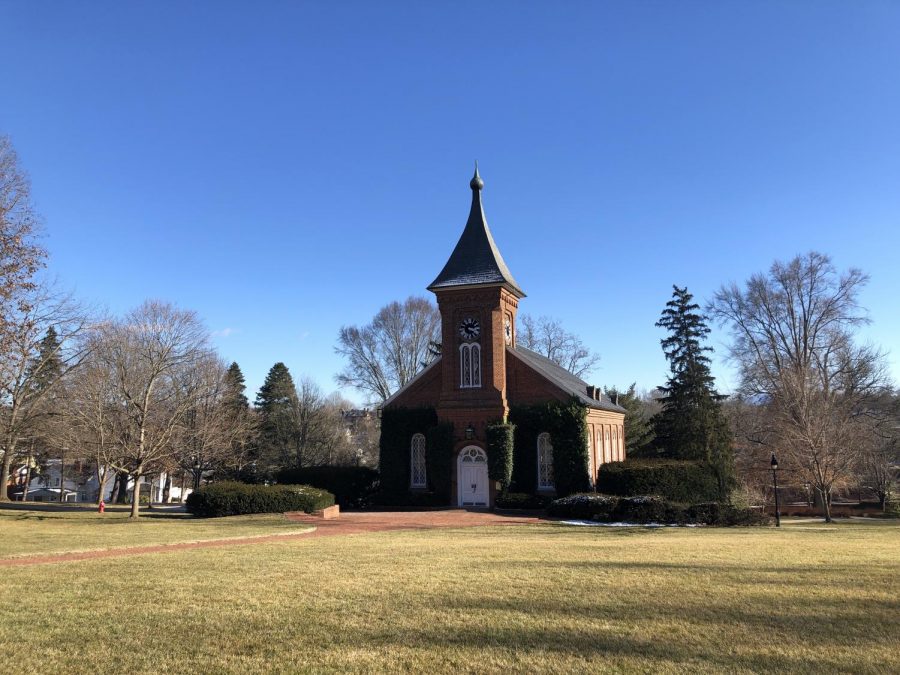Ty Seidule criticizes the university for upholding Lost Cause ideology
Seidule spoke to the community about his new book and his relationship with Robert E. Lee.
March 4, 2021
“History is dangerous because it goes after our myths and our identities,” Ty Seidule told the audience over Zoom. “The thing about Lee Chapel is that it is the shrine of a Lost Cause. Washington and Lee has become this shrine as well.”
Seidule is a historian, Washington and Lee alumni and self-proclaimed apostate of the Lost Cause. He spoke to the Washington and Lee community Feb. 15 about his new book “Robert E. Lee and Me: A Southerner’s Reckoning with the Myth of the Lost Cause.”
Seidule delivered his lecture as the debate regarding the prominence of Lee on campus reached a critical point. Earlier this month, the Board of Trustees delayed making its decision on the future of the university’s name.
“Every time Washington and Lee needs to make a change, it wraps itself in Lee,” Seidule said.
The last time Seidule spoke at the university, he stood at the front of Lee Chapel. Since then, Seidule has developed some strong opinions about the building.
“It is a memorial to the civic religion of the Lost Cause, and it is a dangerous thing that is meant to show white supremacy,” he said.
In his new book, Seidule debunks Lost Cause propaganda and tells his own story of how his relationship with Lee changed over time. He said he credits Professor Ted Delaney with helping him finish the book.
Seidule was raised in Alexandria, Virginia, and attended school in Lexington, which he says informed his early perspective of Lee.
“When did I first meet Lee? I can’t remember life without Lee,” Seidule said. “I’m embarrassed to say that I learned the words to ‘Dixie’ before I learned ‘The Star-Spangled Banner.’”
After graduating, Seidule continued a career in the Army and eventually became a professor at West Point, where he unsuccessfully petitioned against the commemoration of Confederate generals and soldiers.
“I chose to retire so I could write about it. Now that I’m out, you can’t shut me up,” he said.
Seidule said he wanted to write the book so he could help others who were indoctrinated by the Lost Cause, which he considers a civic religion. Lost Cause ideology emerged after the Civil War and was prominent in the first half of the 20th century.
“Segregation laws, white terror lynching, Black disenfranchisement, Confederate monuments, is the Lost Cause, is the foundation for white supremacy and white political power,” Seidule said. “You can look at Lee Chapel as a way of building the Lost Cause narrative.”
The chapel was constructed at the request of Lee when he served as president of Washington College. Inside, pews line the chapel and look toward the statue of the recumbent Lee, which sits in place of an altar. Lee and his family are buried in a crypt in the basement.
Confederate flags lined the walls of Lee Chapel until 2014, after Black students led the movement to remove them from the chapel.
“You need a saint to have a religion, you need a figure, and Lee is that figure,” Seidule said.
On Lee-Jackson Day, followers of the Lost Cause often travel to Lexington to see the chapel and celebrate Lee.
“If you look in that chapel, it has none of the things you would think about in Christianity,” Seidule said. “It doesn’t have a pulpit, there’s no place for hymnals, there’s no cross, and yet it is clearly a chapel.”
Until recently, visiting speakers like Seidule historically spoke in Lee Chapel, with the exception of Martin Luther King, Jr., who the school refused to let speak in the building in 1961.
Every year, freshmen convene in the chapel to learn about the university’s honor system, which, Seidule pointed out, was not created by Lee. In 1961, the university prevented Martin Luther King from speaking in the building.
“Lee Chapel so shamelessly commemorates someone with such backwards morals and the fact that no one will do anything about it doesn’t bode well for the future of our campus,” Lexi O’Brien, ‘22, said following the lecture.
“The chapel is a tool to realize that those myths have been normalized and worshiped,” Seidule said.
During the Q&A, Seidule addressed the question on everyone’s mind: What about the name?
“I wasn’t ready to give this answer in 2017, but now that I’ve read and written about it, I know that this school is better than that name,” he said. “The name no longer represents what this school is.”
People opposed to the name change argue that changing the name is an attempt to revise history. Washington and Lee has previously been named Liberty Hall Academy and later Washington College.
“Remember that monuments and memorialization say less about the man, and more about the person who erected it,” Seidule said.
Seidule encouraged the audience to email the Board of Trustees to voice their support for the name change.
“There can’t be reconciliation without truth and accountability first,” he said.




